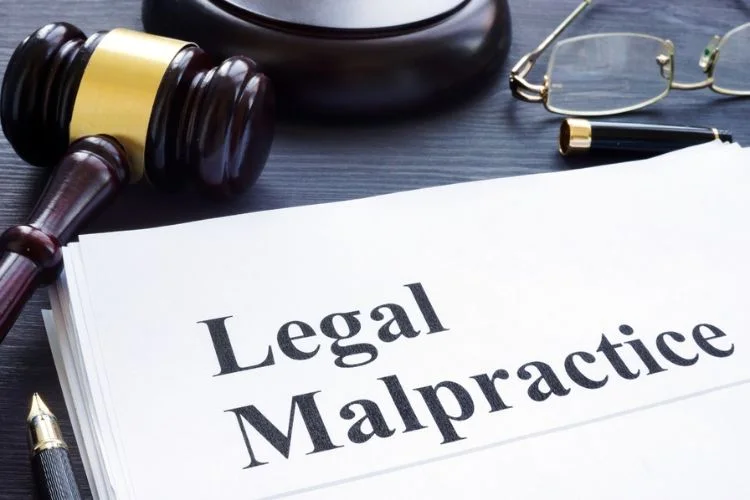Copyright registration is the act of the copyright owner or author of a work carrying out the necessary legal procedures to submit a copyright application for their created work to the Copyright Office of Vietnam to protect their work.
1. What is copyright?
Pursuant to Clause 2, Article 4 of the Law on Intellectual Property of Vietnam 2005 (amended by Clause 2, Article 1 of the Law on Intellectual Property Amendments 2009), copyright is the right of organizations and individuals to works they have created or own.
Copyright arises from the moment a work is created and expressed in a specific material form, regardless of its content, quality, form, medium, language, whether it has been published or not, or whether it has been registered or not.
2. What rights does copyright include?
Copyright for protected works includes moral rights and economic rights.
2.1. Author’s moral rights
The author’s moral rights include the following rights:
– To name the work: The author has the right to transfer the right to use the work’s name to organizations or individuals receiving the transfer of economic rights as stipulated in Clause 1, Article 20 of the Law on Intellectual Property.
– To have their real name or pseudonym indicated on the work; to have their real name or pseudonym mentioned when the work is published or used;
– To publish the work or authorize others to publish the work;
– To protect the integrity of the work, preventing others from modifying, mutilating, or distorting the work in any way that is detrimental to the author’s honor and reputation.
2.2. Author’s economic rights
Economic rights include the rights stipulated in Article 20 of the current Law on Intellectual Property. These include the following rights:
– To make derivative works;
– To perform the work publicly, directly or indirectly, through sound recordings, video recordings, or any other technical means at a place accessible to the public, but where the public cannot freely choose the time and individual parts of the work;
– To reproduce directly or indirectly all or part of the work by any means or in any form, except in cases specified in point a, Clause 3, Article 20 of the Law on Intellectual Property;
– To distribute, import for distribution to the public through sale or other forms of ownership transfer of the original or copies of the work in tangible form, except in cases specified in point b, Clause 3, Article 20 of the Law on Intellectual Property;
– To broadcast, communicate the work to the public by wired, wireless, electronic information networks, or any other technical means, including making the work available to the public in such a way that members of the public may access it from a place and at a time individually chosen by them;
– To lease the original or copies of cinematographic works, computer programs, except where the computer program is not the main subject of the lease.

3. Works eligible for copyright registration
Literary, artistic, and scientific works protected by copyright include:
– Literary works, scientific works, textbooks, teaching materials, and other works expressed in written form or other characters: these are works expressed in braille for the visually impaired, shorthand symbols, and similar symbols replacing writing that can be copied by various forms by those accessing them.
– Lectures, speeches, and other spoken works are works expressed in spoken language and must be fixed in a specific material form.
– Journalistic works are works with independent content and complete structure, including genres such as: reports, quick notes, narratives, interviews, reflections, investigations, commentaries, editorials, specialized articles, journalistic essays, and other journalistic genres intended for publication or broadcast in print newspapers, radio, television, online newspapers, or other media.
– Musical works are works expressed in musical notes in a score or other musical characters, or fixed on sound recordings, video recordings with or without lyrics, regardless of whether they are performed or not.
– Stage works are works belonging to the performing arts genre, including: Chèo, tuồng, cải lương, puppetry, spoken drama, folk opera, physical theater, musical theater, circus, comedy sketches, variety shows, and other forms of performing arts.
– Cinematographic works and works created by analogous methods (hereinafter collectively referred to as cinematographic works) are works expressed by moving images combined or not combined with sound and other means according to the principles of cinematographic language. A still image extracted from a cinematographic work is a part of that cinematographic work;
– Works of fine art, applied art are works expressed by lines, colors, shapes, compositions such as: painting, graphics, sculpture, installation art, and similar forms of expression, existing as unique copies. For graphic works specifically, they can be expressed up to the 50th version, numbered consecutively with the author’s signature. Accordingly, works expressed by lines, colors, shapes, compositions with useful features, which can be associated with a useful object, produced manually or industrially, such as: graphic design (forms of expression of logos, identification systems, and product packaging), fashion design, product styling, interior design, decoration.
– Photographic works are works that represent images of the objective world on light-sensitive materials or on means by which images are created, or can be created by chemical, electronic, or other technical methods. Photographic works may or may not have captions.
– Architectural works are works belonging to the architectural type, including: Architectural design drawings of a building or a complex of buildings, interiors, landscapes; Architectural constructions.
– Plans, diagrams, maps, drawings related to topography, architecture, scientific works include plans, diagrams, maps, drawings related to topography, various types of scientific and architectural works.
– Folk literary and artistic works are forms of performing arts such as chèo, tuồng, cải lương, puppetry, songs, musical tunes; dances, plays, folk games, village festivals, and forms of folk rituals.
– Computer programs, data compilations.
4. Copyright registration dossier and procedures
4.1. Components of the dossier
According to Article 39 of Decree 17/2023/ND-CP, a copyright registration dossier includes:
– Copyright registration declaration (according to the form in Circular 08/2023/TT-BVHTTDL) signed or fingerprinted by the author or copyright owner, except in cases where they are physically unable to sign or fingerprint;
– 02 copies of the work (including electronic copies) or 02 copies of the fixed performance, sound recording, video recording, broadcast program;
– Power of attorney if the applicant is authorized by the author, copyright owner, or related rights owner. The power of attorney must specifically state the contact information of the authorizing party and the authorized party; the name of the work, performance, sound recording, video recording, broadcast program; scope of authorization; duration of authorization. If the authorizing party is an individual, the power of attorney must be notarized in accordance with the law.
– Documents proving ownership:
+ Identification documents for individuals: 01 copy of Citizen Identity Card or Passport;
+ Legal entity documents for organizations: 01 copy of Enterprise Registration Certificate or Establishment License or Establishment Decision;
+ Documents proving ownership due to assigned creative tasks are decisions or confirmations of task assignment to individuals within that unit or organization;
+ Documents proving ownership due to creative contract are contracts, regulations, or competition rules;
+ Documents proving ownership by inheritance are notarized or certified documents confirming inheritance rights in accordance with the law;
+ Documents proving ownership due to transfer of rights are notarized or certified written contracts of assignment, gift, sale, or capital contribution in accordance with the law;
In cases where the author is not simultaneously the copyright owner, there must be a written commitment affirming self-creation and creation according to a decision or confirmation of task assignment; contract; participation in a competition, and bearing legal responsibility for the content of the commitment.
+ Documents proving ownership due to assigned creative tasks or creative contracts as stipulated in this clause must be original or notarized/certified copies;
– Written consent of co-authors, if the work has co-authors;
– Written consent of co-owners, if the copyright or related rights are jointly owned;
– If the work uses the personal image of another person, written consent from that person must be obtained in accordance with the law.
Regarding language in the registration dossier: Documents such as Power of Attorney, documents proving ownership due to self-creation or assigned creative tasks, creative contracts, inheritance, transfer of rights, written consent of co-owners (if copyright or related rights are jointly owned) must be in Vietnamese; if in another language, they must be translated into Vietnamese.
4.2. Method of submission
Authors, copyright owners, and related rights owners can directly or authorize another organization or individual to submit copyright registration applications or related rights registration applications in 03 ways at the Ministry of Culture, Sports and Tourism (Copyright Office of Vietnam or its representative offices in Ho Chi Minh City, Da Nang City):
– In person;
– By postal service;
– Via the National Public Service Portal.
Note: Foreign organizations and individuals with works, performances, sound recordings, video recordings, broadcast programs protected by copyright and related rights according to Clause 2, Article 13 and Article 17 of the Law on Intellectual Property, shall directly or authorize a copyright and related rights consulting and service organization to submit 01 set of copyright or related rights registration dossiers to the Ministry of Culture, Sports and Tourism (Copyright Office of Vietnam or its representative offices in Ho Chi Minh City, Da Nang City).
4.3. Processing time
Within 15 working days from the date of receiving a valid dossier, the state management agency for copyright and related rights is responsible for granting a Certificate of Copyright Registration or Certificate of Related Rights Registration to the applicant.
In case of refusal to grant a Certificate of Copyright Registration or Certificate of Related Rights Registration, the state management agency for copyright and related rights must notify the applicant in writing, stating the reasons.
5. Copyright Registration Services at VN Law Firm
Throughout the process of carrying out Copyright Registration procedures for clients, VN Law Firm always performs its full range of services, such as:
- Advising on the necessary documents, procedures, and time for copyright registration.
- Consulting and classifying copyright registration objects to suit client requirements;
- Preparing registration dossiers; providing clients with the most suitable and latest forms.
- Acting as a representative for clients to submit registration applications, receive and respond to examinations, and pay fees and charges at the Copyright Office of Vietnam.
- Monitoring the application processing on behalf of clients.
- Supplementing or amending the dossier as requested by the examining officer (if any).
- Receiving all types of Copyright Registration Certificates and handing them over to the clients.
- Filing complaints against decisions to refuse the issuance of certificates (if any).
- Advising on handling copyright infringement of registered works (if any).
| Field: Intellectual Property | Hotline: 0782244468 |
| Website: LawFirm.Vn | Email: info@lawfirm.vn |
| Facebook: LawFirm.Vn | Zalo: 0782244468 |





